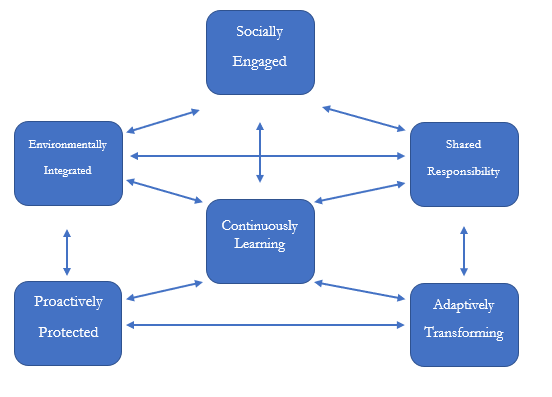INP-WealthPk
Uzair Bin Farid
In line with international trend to move away from traditional design, Pakistan is mulling to adopt resilient infrastructure to absorb the shocks of climate calamity and natural disasters, WealthPK reports.
In this regard, the principles set forth by a 2022 report, “Principles of Resilient Infrastructure” by the United Nations Office for Disaster Risk Reduction (UNDRR) serve as the framework blueprint.
The report has outlined six principles (fig-1) which are interconnected and proactively engaged to ensure that modern infrastructure is designed to absorb the shocks of a natural disaster, especially climate change, in the emerging context.
Fig-1

Continuous learning is the first step in the process that will help to keep a sustained emphasis on the need to upgrade design, expose and validate assumptions about infrastructure resilience under new forms of natural stress, and when needed, administering proper intervention. The final stage in this step comes when learning is undertaken through case studies and scientific research so that infrastructure resilience can be ensured over the long-run.
Another facet of continuous learning is that the current work in infrastructure development is brought in line with the known and potential natural disasters that may strike in the future.
The second step in the six-step process is called proactive protection. Proactive protection is ensured by raising the baseline for the existing safety procedures, investment plan for the long-term, space for safe failures, and by making the design for multiple scales.
It is followed closely by environmental integration. The idea of infrastructure resilience follows closely with the need to make infrastructure development compatible with needs of a changing climate. Protection of natural environment, use of sustainable local resources, and making use of environmental solutions are part of this process to make modern infrastructure environmentally sustainable.
At the same time, social engagement is also necessary so that first-responders or victims should always know what to expect, and how to respond in case of an emergency. This involves increasing resilient literacy, informing people about disruptions, and encouraging community participation.
Community participation is not effective if people are not made to realize their mutual shared responsibility towards the people and environment around them. This can be done most effectively by training, sharing information, collaborative management, and the sharing of risk and return data. Community participation is also important in the context of first-responders. It is the local community that understands the topographical position of the affected infrastructure in case of an emergency. Therefore, if local people are mobilized and trained to that effect, they can very effectively replace institutional response as the first response. It will also reduce the risk of waiting for an institutional response which might not be that quick.
The final step in the process comes in the form of adaptive transforming. This harmonizes the whole process and structure of inter-related institutions to gradually make progress in a defined manner to achieve the goals of resilient infrastructure.
Pakistan will have to make use of best practices which are in operation around the globe in geographically sensitive locales. Time and again it has been stressed that Pakistan is the most vulnerable country at the risk of climate change. Pakistan will have to move forward in the future by being adaptive and open to solutions which are resilient and work along the long-term policy horizon.
Credit: Independent News Pakistan-WealthPak




